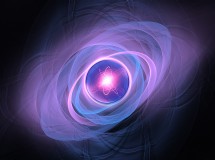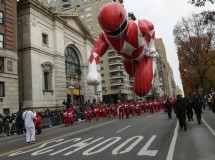- 1). Fill the large beaker with water. It does not need to be full, but the water should be deep enough to submerge about half the length of the pencils. Tap water is fine. The ions in the tap water will actually facilitate the reaction.
- 2). Mount the two smaller beakers upside-down in the large beaker so that they are partially submerged in water. This is where the hydrogen and oxygen gas will collect, so the less air trapped inside them, the better. If you can, submerge them right side up to fill them with water, then turn them upside down and slowly draw upward until they are poking out a ways with water still trapped inside. Secure them in place using your beaker stands and clamps, or whatever other means you have.
- 3). Remove the eraser and metal casing from the ends of the pencils by pulling them off. Sharpen the pencils at both ends.
- 4). Using the rubber bands, affix the pencils to the sides of the small beakers so that one end of each is under water below the bottom of its beaker and the other is above water. The gas will form at the pencil tips and bubble upward, so it is desirable to angle the pencils so that the underwater end is below the center of the beakers. This can be done using an object (binder clip, pink eraser, what have you) stuck between the top of the pencil and the outside of the beaker, above the rubber band.
- 5). Secure the electrical wire lengths to the top end of the pencils. The end of the wire should have good contact with the graphite tip.
- 6). If you have sulfuric acid, sodium hydroxide or potassium hydroxide, add a pinch to the water. This will dissolve in the water to become an electrolyte, increasing the rate at which current will flow and gas will be produced. If you find it moves to slowly later, you can add more. The substances given are most desirable because they won't react with the electrodes. If you were to use table salt, it would produce chlorine gas instead of oxygen.
- 7). Attach the two other ends of the wires to the two electrodes of the battery. The pencil attached to the negative terminal will produce hydrogen gas and the pencil attached to the positive terminal will produce oxygen gas. The separate gasses will then collect in the inverted beakers. Be aware that there will be twice as much hydrogen as oxygen.
SHARE





































